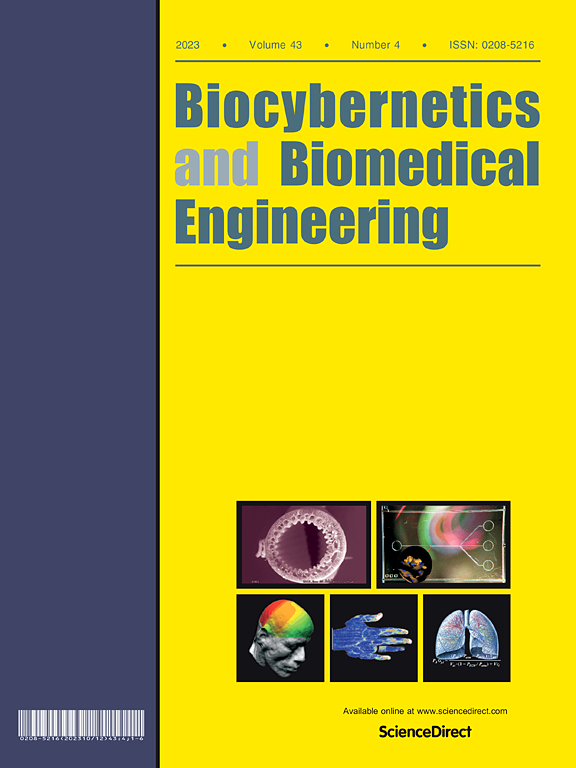Classification of motor imagery EEG signals using wavelet scattering transform and Bi-directional long short-term memory networks
IF 6.6
2区 医学
Q1 ENGINEERING, BIOMEDICAL
引用次数: 0
Abstract
A brain-computer interface (BCI) is a technology that creates a communication path between the brain and external devices. Raw EEG data in BCI contain a large amount of complex information, but only some of it needs to be focused on in research. So Feature extraction and classification play an important role in BCI by reducing the data dimensionality and improving the accuracy of subsequent classification. Wavelet scattering transform is an emerging feature extraction method that generates time-shift invariant representations of EEG signals. We applied the wavelet scattering transform to extract features from motor imagery EEG signals, and utilized these features for classification purposes. To achieve this, we proposed a new method that combines wavelet scattering transform with a bidirectional long short-term memory (BiLSTM) network in a fusion deep learning network. Wavelet scattering transform can deeply mine the feature information in EEG signals. In the classification stage, multiple time window features obtained in the scattering transform are sent to the BiLSTM network for classification. The final result will be determined by a vote. In addition, for the processing of raw EEG data, we proposed a time-step based time window strategy that can better utilize the small dataset. This operation can obtain EEG data of multiple time steps. The proposed method was validated using BCI competition II dataset III and BCI competition IV dataset 2b. The results show that the proposed method in this paper can effectively improve the accuracy of motor imagery EEG and provide a new idea for the feature extraction and classification research of motor imagery brain-computer interface.
基于小波散射变换和双向长短期记忆网络的运动意象脑电信号分类
脑机接口(BCI)是一种在大脑和外部设备之间创建通信路径的技术。脑机接口的原始EEG数据包含了大量复杂的信息,但其中只有一部分需要重点研究。因此,特征提取和分类在脑机接口中发挥着重要的作用,可以降低数据维数,提高后续分类的准确率。小波散射变换是一种新兴的脑电信号时移不变特征提取方法。利用小波散射变换提取运动意象脑电信号的特征,并利用这些特征进行分类。为此,我们提出了一种融合深度学习网络中小波散射变换与双向长短期记忆(BiLSTM)网络相结合的新方法。小波散射变换可以深度挖掘脑电信号中的特征信息。在分类阶段,将散射变换得到的多个时间窗特征发送到BiLSTM网络进行分类。最终结果将由投票决定。此外,对于原始脑电数据的处理,我们提出了一种基于时间步长的时间窗策略,可以更好地利用小数据集。该操作可以获得多个时间步长的脑电图数据。采用BCI competition II数据集III和BCI competition IV数据集2b对该方法进行了验证。结果表明,本文提出的方法能够有效提高运动图像脑电的准确率,为运动图像脑机接口的特征提取与分类研究提供了新的思路。
本文章由计算机程序翻译,如有差异,请以英文原文为准。
求助全文
约1分钟内获得全文
求助全文
来源期刊

Biocybernetics and Biomedical Engineering
ENGINEERING, BIOMEDICAL-
CiteScore
16.50
自引率
6.20%
发文量
77
审稿时长
38 days
期刊介绍:
Biocybernetics and Biomedical Engineering is a quarterly journal, founded in 1981, devoted to publishing the results of original, innovative and creative research investigations in the field of Biocybernetics and biomedical engineering, which bridges mathematical, physical, chemical and engineering methods and technology to analyse physiological processes in living organisms as well as to develop methods, devices and systems used in biology and medicine, mainly in medical diagnosis, monitoring systems and therapy. The Journal''s mission is to advance scientific discovery into new or improved standards of care, and promotion a wide-ranging exchange between science and its application to humans.
 求助内容:
求助内容: 应助结果提醒方式:
应助结果提醒方式:


